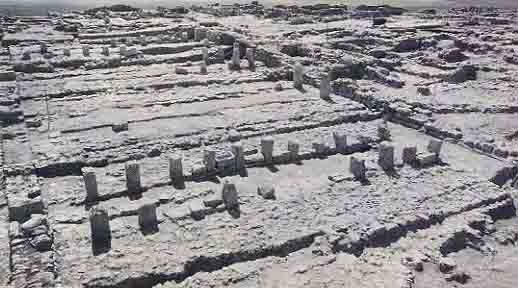“Solomon’s Stables”: Are They Solomon’s? Are They Stables?
Sidebar to: Back to Megiddo

Among Megiddo’s best-known remains are the structures popularly called Solomon’s Stables. The term refers to two large complexes, on Megiddo’s northeastern and southwestern sides, each consisting of a series of attached units, subdivided into three long rooms by two parallel rows of columns. The side rooms of these tripartite buildings are thought by many scholars to have been stables for horses, with the center aisles used to move animals in and out. Other scholars argue that the complexes were storehouses, while still others believe they were military barracks or marketplaces. What almost all scholars agree on, however, is that the structures were not built by Solomon in the tenth century B.C.E. They are dated to the ninth century B.C.E. instead, possibly to the reigns of King Omri or King Ahab. (For the possibility that Solomon, too, had stables at Megiddo and that they might still be partially visible under the later structures, see “King Solomon’s Stables—Still at Megiddo?”)
Already a library member? Log in here.
Institution user? Log in with your IP address.

